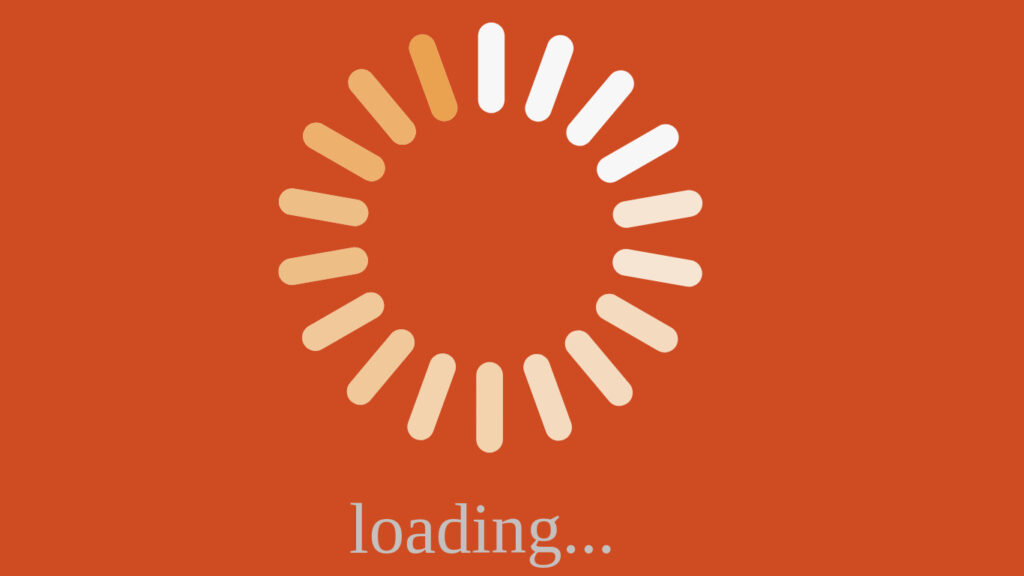
Google prioritizes fast-loading pages for better user experience and SEO. Tools like Core Web Vitals and Page Speed Insights measure page speed, confirming its impact on search rankings. Faster load times reduce bounce rates and improve conversions. Mobile optimization is crucial for user satisfaction. Optimizing for speed enhances accessibility. Focusing on these aspects can improve website performance, boost SEO, and stay competitive in today’s digital landscape. Let’s look at “Why and how to measure webpage load time?”.
Page load time:
Web page load time is the duration of a webpage’s content entirely appearing on a user’s screen after they request it. Measured in seconds, it encompasses when a user clicks a link or enters a website address and when all elements, including text, images, and interactive features, are visible.
How Is Page Load Time Calculated?
Page load time is when an internet site appears entirely on your screen after a link click or site entry.
The Process-
1. User Initiates Request: This occurs once a person types a website’s URL into their browser’s address bar.
2. Server Processing: The server receives the request, processes it, and prepares the necessary data.
3. Data Transfer: The server sends the webpage’s data (HTML, CSS, images, scripts) to the browser.
4. Browser Rendering: The browser receives the data, builds the page structure (DOM), and displays the content.
Critical Factors Affecting Page Load Time
How fast your website loads is essential. It affects how users feel about your website and how high it ranks in search results. If you know what makes your website load slowly, you can do things to make it faster and better for users.
Here are some key points:
· Network Speed:
The internet connection speed significantly impacts load time.
· Server Response Time:
How quickly the server processes the request and sends data.
· Website Code Efficiency
Well-optimized code (HTML, CSS, JavaScript) can dramatically improve load times.
· Image Optimization
Image size and format can affect load time.
· Number of HTTP Requests
Fewer requests generally lead to faster load times.
· Browser Caching
The browser’s ability to store and reuse resources.
Measuring Page Load Time with Tools
You can use different tools and techniques to measure how fast your website loads and determine what makes it slow. Here are some popular options:
• Online Performance Testing Tools:
There are special tools like Google Pagespeed Insights, WebPage Test, and Matrix that can help you see how fast your website is. They can also tell you how to make it faster.
• Browser Developer Tools:
You can use most web browsers to check how fast your website loads and determine what’s slowing it down.
Why Is Page Load Time Important?
Imagine a world where websites load faster than a cheetah sprint. A place where users are instantly immersed in content, free from the frustrating lag of slow pages. This is the realm of optimized page load times, where user experience is paramount. Let’s explore how you can create a website that’s not just fast but lightning-fast.
Page load time is crucial for a website’s success for several reasons:
• User Experience: Slow websites make people impatient, and they leave quickly. So you lose visitors and sales.
• Search Engine Rankings: Search engines reward websites with fast loading times. A slow website might get lost in the shuffle.
• Conversion Rates: Faster load times correlate with higher conversion rates as users are more likely to complete desired actions (purchases, sign-ups, etc.).
• Mobile Performance: Websites need to load fast on phones. Because people don’t like to wait on small screens.
A fast website helps you look good online, keeps people happy, and makes you more money.
How does page load time and response time differ?
Page load time and response time are two distinct metrics measuring website performance. Even though people often use these terms interchangeably, knowing their differences is essential. This can help you make your website faster and better for users.
· A server’s response time is how quickly it answers a request. It only cares about how fast the website’s computer works. It doesn’t look at how long it takes to download all the website parts. In short, Response time is a component of page load time.
· Page load time is how long it takes for a whole website to appear after you ask for it. It includes the time it takes for the website’s computer to answer. Plus, the time to download pictures, code, and other stuff. Page load time shows you how fast the whole website feels from your point of view.
Both numbers are essential for making your website faster. Knowing the difference between them helps you figure out exactly what to improve.
What is a good page load time on a website?
A “good” page load time is subjective and can vary depending on several factors, including the type of website, user expectations, and industry standards. However, a page load time of under 2 seconds is considered a good benchmark for most websites.
Here’s a breakdown of why 2 seconds is often used as a standard:
• User Experience: Research shows that users are likelier to leave a website if it takes more than 3 seconds to load. A page load time of under 2 seconds helps to improve user satisfaction and reduce bounce rates.
• Search Engine Rankings: Google and other search engines prioritize websites with fast load times. If your website loads quickly, it might appear higher in search results. This means more people can see it and visit your website.
• Conversion Rates: Fast page load times can also positively impact conversion rates. Users are more likely to complete a purchase or sign up for a service on a website that loads quickly and is easy to navigate.
What causes slow page loading?
In today’s digital world, website speed matters a lot. Slow websites can annoy users, make them leave, and damage your search rankings. If you know what makes your website load slowly, you can do things to make it faster and better for users.
Causes of Slow Page Loading:
Server-Side Factors:
• Hosting Provider:
The quality of your hosting provider can significantly impact page load times. If your hosting provider’s servers are slow or overloaded, it can affect your website’s performance.
• Server Location:
The physical location of your server can also impact page load times, especially for users who are located far away. A closer server location can benefit your target audience.
• Server Configuration:
A server’s location also affects how quickly pages load, especially for distant users. Choosing a server location near your target audience can reduce latency and improve performance.
Client-Side Factors:
• Large File Sizes:
Large files, such as images, videos, and scripts, can significantly slow page load times. Optimizing these files by compressing and resizing them to fit their intended use can improve performance.
• Number of HTTP Requests:
The number of HTTP requests a browser needs to load a page can also impact its speed. Reducing the number of requests by combining files or using caching can improve performance.
• Render-Blocking Resources:
Resources that block rendering, such as JavaScript files, can delay the display of content on the page. Deferring or asynchronous loading of these resources can improve perceived performance.
• CSS and JavaScript Optimization:
Combining CSS and JavaScript files can reduce file size and improve load times.
• Image Optimization:
If you make images smaller, use the correct format (JPEG or PNG), and resize them to fit where you want to use them, your website will load faster.
• Third-Party Scripts:
Sometimes, website trackers or social media buttons can slow down websites. Check if you need these things and make them load faster or use a different method.
Content and Structure Factors:
• Page Complexity: The more things on your website, like images, scripts, and styles, the longer it might take to load. Simplifying your page structure and reducing unnecessary elements can improve performance.
• Leveraging Browser Caching: If your browser saves often-used files, it doesn’t need to download them as much. This makes websites load faster.
• Using a Content Delivery Network (CDN):
A CDN can spread your website’s files across many servers worldwide, loading sites faster for people in different places.
Additional Factors:
• Poor Network Connectivity: Websites might take longer to load if your internet is slow. This is especially true if you have a terrible internet connection.
• Outdated Browser or Device: An outdated browser or device with limited processing power can also affect page load times.
If you know what makes websites slow, you can do things to make your website faster and better for users. Addressing these issues allows you to create a faster, more responsive website to attract and retain visitors.
What are some ways to improve website performance?
In today’s fast-paced world, websites need to load quickly. As a slow website experience, users might get frustrated and leave. This can hurt how your website performs in terms of search results. Speeding up your website will ensure it runs faster and performs well.
Here’s how to accelerate your site:
• Optimize Images:
Your website can be significantly slowed down when you use large images. Use programs such as Tiny PNG or Squash to minimize the size of photographs with no impact on quality. We should use the right kind of picture for your website. Use JPEG for photos, PNG for images with clear parts, and Web Page for newer computers if you can.
• Reduce HTTP Request:
Every file on your website requires an HTTP request, slowing down load times. Put all your website styles (CSS) and actions (JavaScript) into one file each. Combine small pictures into one big picture. Use the simplest type of website fonts.
•Use browser caching:
Leverage Browser Caching stores website resources locally, reducing server load and improving speed. Tell your computer to save pictures, styles, and website actions for a while so it doesn’t have to download them again.
• Avoid render-blocking JavaScript:
Eliminating Render-Blocking JavaScript can delay page rendering. Wait to load the less important website stuff until the page shows. Put the essential styles at the top of the page so it looks better and faster.
• Minimize External Scripts:
Third-party scripts can impact performance. Only include imperative scripts and consider self-hosting critical ones for better control.
• Avoid Redirects and add extra HTTP requests:
Avoid sending people to different pages too often. If you must change a page forever, use a unique link (301 redirect) to tell search engines about the new page. Make your website code minor by taking out extra spaces and notes. This makes it load faster.
Additional Tips
• Put your website in many places worldwide so it loads faster for people far away.
Do these things to make your website fast and good. People will like it more and see it appear higher in search results.
